Last Year's Deer Tally Leaps To New Record
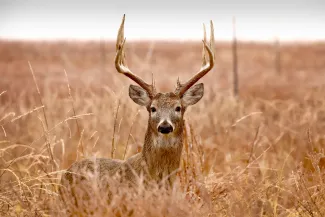
It’s easy to imagine this scenario: A couple of old hunters are sitting around the fireplace, telling tales of grand trips afield, remembering the years in the early-2020s and saying, “Those were the good ol’ days of big game hunting in Oklahoma.”
It’s easy to imagine because this past season, Oklahoma’s big game hunters set several harvest records — again!
A new mark was set for overall deer harvest in the state; hunters reported taking 134,158 combined in all 2022-23 deer seasons. This total blew away the previous high total of 126,290 set just two years ago.
Oklahoma’s deer populations enjoyed growing numbers and good habitat conditions across much of the state last year, factors contributing to the record harvest. But also contributing was the willingness of Oklahoma hunters to help the state’s deer management plan by taking more antlerless deer.
Antlerless harvest made up 45 percent of the total harvest, falling right in line with the statewide management goals that are resulting in healthier populations overall.
See Figure 1 for the total deer harvest from 2004 to this past season.
Figure 1: Total Harvest from 2004 to Current

Gun seasons (the 16-day modern firearms season, youth gun season, and holiday antlerless deer gun season) continue to lead the harvest numbers. A total of 80,956 deer were taken in gun seasons last year.
Muzzleloader hunters took 11,715 deer during the nine-day season. Archery hunters continued their string of consecutive-year record harvests, with 41,487 deer with bowhunting equipment.
See Figure 2 for a look at the success rates among the various hunting methods. Figure 3 shows each individual method and that method’s percentage of the 2022-23 total harvest.
Figure 2: Success by Method from 2004-Current

Figure 3: 2022-23 Harvest by Method
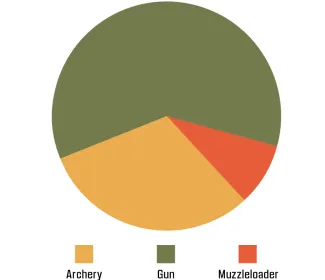
One challenge that deer hunters face in Oklahoma is the diversity in habitat. Oklahoma’s greatly variable landscapes offer different levels of quality deer populations and deer habitat. While some counties offer vast amounts of public property, other counties offer no public areas in which to hunt.
To represent the hunting access variables, Table 1 shows deer harvest by county with all wildlife management areas and other public lands removed.
The top three deer-harvest counties were Osage County, where hunters bagged 5,409 deer; Pittsburg County, with a harvest of 4,662 deer, and Creek County, at 3,390 deer harvested.
Table 1: Harvest by County, Sex, and Method

WMAs and other public lands managed by the Oklahoma Department of Wildlife Conservation make up only about 3 percent of Oklahoma’s land mass. But it’s important to note that this small percentage of public land actually accounts for 7.5 percent of the state’s total deer harvest. For details on those public land harvests, see Table 2.
Oklahoma hunters also have the opportunity to take a mule deer in western portions of the state. These deer frequent the Panhandle and are slowly rebounding from poor habitat conditions that have affected the western one-third of the main body of Oklahoma.
Fragmented populations and habitat conditions make bagging this species a difficult task. But still, Oklahoma deer hunters managed to harvest 209 mule deer during the 2022-23 seasons. See Table 3 to learn about the mule deer harvest by county, sex and method.
Table 2: WMA Harvest by Sex and Method
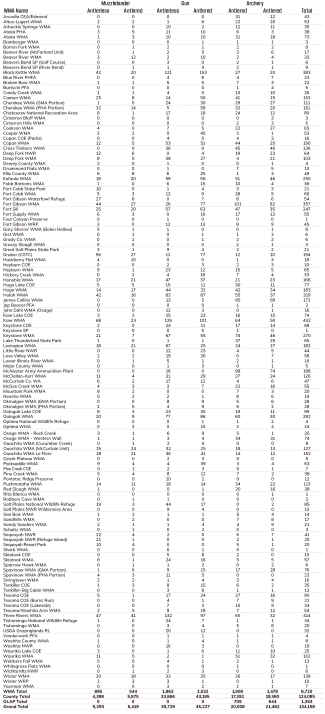
Table 3: Mule Deer Harvest by County, Sex, and Method

Archery Season
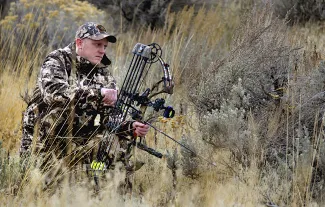
Again archery hunters set another harvest record during the 2022-23 season. Harvest totaled 41,487 deer, making up almost 31 percent of the total harvest.
More impressive: Of the total harvest, 48 percent were antlerless deer.
The annual Game Harvest Survey (GHS), a scientific survey conducted by ODWC, has been tasked with tracking hunter participation metrics for decades. The GHS estimated that 102,116 hunters went afield with archery gear in hand. This is lower than in some years past, but this year’s estimate does not include the tribal compact licenses issued in previous years. That is now the case for each method’s estimate of hunter numbers.
Archery season in 2022-23 remained unchanged, running uninterrupted from Oct. 1 to Jan. 15. Hunters could choose to harvest a total of six deer, with no more than two being antlered deer. See Figure 4 for the archery deer harvest by week. Figure 5 shows harvest and hunter trends over the years.
Figure 4: 2022-23 Archery Harvest by Week
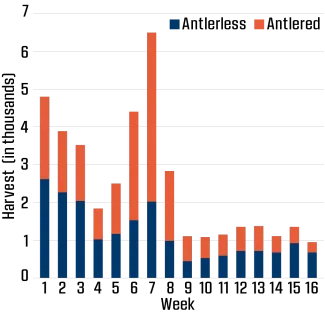
Figure 5: Archery Hunter Numbers and Harvest Count
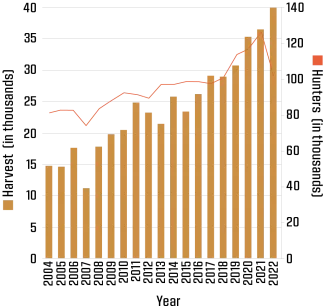
Muzzleloader Season
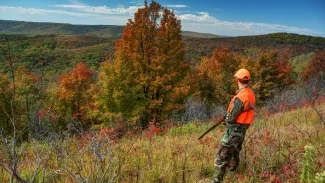
Muzzleloader hunters had a nine-day season from Oct. 22-30. Bag limits remained unchanged; hunters could take four deer, with only one of those being antlered.
Continued encouragement of antlerless harvest was represented by liberal antlerless bag limits in various antlerless deer zones, which can be seen in Figure 11.
The GHS estimated 55,913 hunters went afield for this very underused method of harvest. A total of 11,715 deer were taken, with 45 percent of those being antlerless. Figure 6 shows muzzleloader season harvest on each day of the season. Figure 7 shows muzzleloader harvest trends since 2004.
Figure 6: 2022 Muzzleloader Season by Day
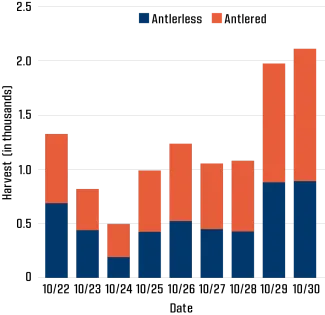
Figure 7: 2022 Muzzleloader Season Harvest and Hunter Numbers

Gun Season
Oklahoma’s traditional 16-day gun season ran from Nov. 19 through Dec. 4, and bag limits were unchanged from previous years. Hunters could take four deer, with no more than one being antlered.
A record harvest of 80,956 deer fell during the combined gun seasons of youth, regular, and holiday antlerless seasons, 44 percent of which was antlerless. That harvest was achieved by a GHS-estimated 136,768 hunters. Youth deer gun season accounted for 4,058, while holiday antlerless gun season shows continued participation and success. Those participating in the holiday season managed to harvest 7,705 deer, an increase from last year’s total of 6,362. Figures 8 and 9 break down gun harvest, both by day during the 16-day season, and trends over the years. Figure 10 shows holiday antlerless season harvest since 2015.
Figure 8: 2022 Gun Season by Day
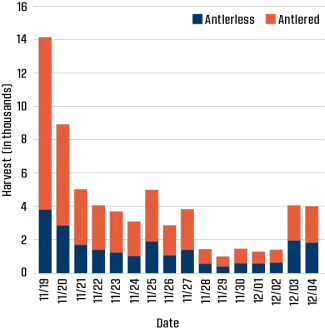
Figure 9: Gun Seasons Harvest and Hunter Numbers

Figure 10: Holiday Antlerless

Figure 11: Deer Antlerless Zones
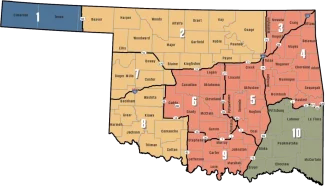
DEER, ELK HUNTERS: EXPECT MORE CWD INFO
The upcoming 2023-24 deer and elk hunting seasons will be the first since chronic wasting disease has been confirmed among wild deer within the physical borders of Oklahoma.
Chronic wasting disease (CWD) is an always-fatal neurological disease that affects the brains of deer, elk, moose, and other members of the cervid family, creating holes resembling those in sponges. It was first discovered in the 1960s in Colorado.
In June 2023, Oklahoma's first case of CWD was confirmed in a free-ranging wild deer in Texas County, prompting the activation of the second stage of the state's CWD Response Strategy jointly produced by the Oklahoma Department of Wildlife Conservation and the Oklahoma Department of Agriculture, Food and Forestry.
About a month later, a second wild white-tailed deer located east of Mooreland in Woodward County was confirmed infected with CWD.
In last year’s deer hunting season, a CWD Special Surveillance Area (SSA) was put in place in the far southwestern corner of the Oklahoma Panhandle after ODWC was notified by the Texas Parks & Wildlife Department of a road-killed deer positive for CWD that was found 2.5 miles south of the Oklahoma-Texas border near Felt, Okla., in southwestern Cimarron County.
“We will be working through our response plan, implementing surveillance efforts and steps to monitor and slow the potential spread of this disease. Our ultimate goal is to ensure healthy and well-managed deer with as little impact to either the resource or our constituents as possible,” said Jerry Shaw, Wildlife Programs Supervisor with ODWC.
CWD transmission from wild animals to people or to livestock has never been documented.
The Wildlife Department will continue monitoring for evidence of CWD within Oklahoma’s borders and will release additional information, including ways deer and elk hunters can help with detection and mitigation, as hunting seasons approach.
Elk
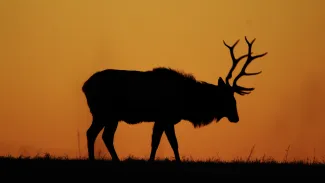
Elk populations continue to expand across much of the state. Some areas boast well-established herds, while other parts of the state are seeing more transient individuals. Private-land hunting with written permission during statewide elk seasons offer hunters an opportunity to harvest an elk, along with controlled elk hunt drawings conducted by ODWC.
Hunters took 549 elk during the 2022-23 season. Most of those elk were taken in the Special Southwest Zone consisting of Kiowa, Comanche, and Caddo counties.
Of the 549 elk harvested, 322 were antlerless. A breakdown of harvest by county, sex, and method can be seen in Table 4.
Table 4: Elk Harvest by County, Sex, and Method

Pronghorn
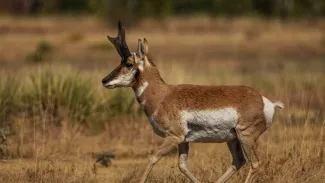
Found amid the rolling shortgrass prairies of Oklahoma’s Panhandle is one of the state’s most unusual big game animals: the pronghorn antelope.
While Oklahoma lies on the easternmost fringes of this creature’s suitable habitat, s America’s fastest land animal. While Oklahoma lies on the easternmost fringes of this creature’s suitable habitat, hunters still have opportunities to harvest North America’s fastest land animal. These opportunities present themselves in the form of ODWC-controlled hunt permits, landowner permits, and over-the-counter archery permits.
Total harvest in 2022 amounted to 150 pronghorn. Cimarron County yielded 107, and the remaining 43 came from Texas County. See Table 5 for a closer look at pronghorn harvest by county, method, and sex.
(P.S.: Pronghorns are not true antelopes. It is the only example of its species left on Earth, and is more closely related to giraffes and camels.)
Table 5: Pronghorn Harvest by County, Method, and Sex

Age Structure
ODWC works with multiple sources each year to obtain age data from the state’s deer harvest. Those sources include cooperators enrolled in ODWC’s Deer Management Assistance Program (DMAP), local meat processors, taxidermists, ODWC’s controlled hunts participants, and ODWC’s online “Age My Deer” portal.
All of this age data provides biologists with information pertaining to age structure and overall health within Oklahoma’s deer herd. Figure 12 and Figure 13 represent the age at harvest for both antlered and antlerless deer.
Figure 12: 2022-23 Antlered Age at Harvest
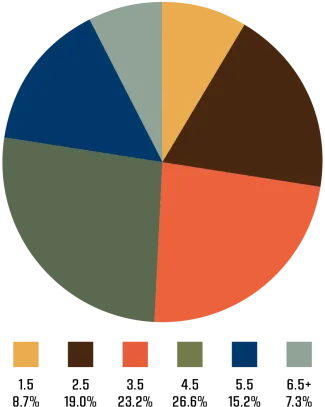
Figure 13: 2022-23 Antlerless Age at Harvest
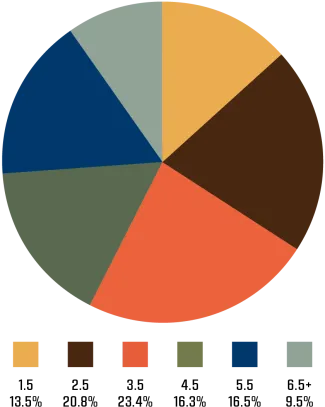
Conclusions
It was a record-setting big game season for 2022-23 in many ways! Records were set for total harvest, archery harvest, and gun harvest.
It is encouraging that Oklahoma deer hunters continue to act as deer managers by making efforts to manage statewide deer herds through adequate antlerless harvest, and selecting for age instead of antlers when it comes to antlered deer.
This can be seen in age at harvest data which has been collected for going on four decades now. In 1989, 1.5-year-old bucks made up 66 percent of overall harvest. Fast-forward to the 2022-23 season, and those yearlings are making up only 8 percent of total harvest.
That change merits huge kudos to the state’s deer hunters. The effort continues to provide trophy potential in every part of the state, all while allowing for hunters to have a quality hunt.
The drum will continue to beat for healthy deer herds, which is achieved through adequate antlerless harvest and letting younger age-class bucks walk.
I have full faith that our hunters have heard that message over the past few seasons and will continue to say, “The proof is in the pudding.”
The 2023-24 season is right around the corner, and habitat conditions are looking up across much of the state. Areas that were plagued with historical droughts have received much-needed rainfall, and at a perfect time for nursing fawns and growing antlers.
This coming season, make it a goal to take someone new in order to pass on this great tradition. And remember that every time you release an arrow or squeeze the trigger, you are making a deer herd management decision on the piece of property where you hunt.
Good hunting to all.
Hunters Take 60 Black Bears During 2022 Seasons

Black bear hunters had a decent hunting season in 2022, taking a total of 60 bears, which was 10 fewer than the year before.
Archery hunters took 57 black bears, while muzzleloader hunters managed three bears this past year in the black bear hunting zone that includes all or portions of 12 counties in southeastern Oklahoma.
Oklahoma’s record black bear harvest was in 2018 when 85 bears were taken.
The 2022 season was the first time that Choctaw Nation authorities handled bear check-in for tribal members only. They checked eight of the 60 bears harvested. Three bears in 2022’s harvest carried research tags. The average age of a harvested bear was 4 years.
In a testament to Oklahoma being regarded as a hunting destination, hunters from seven states bagged a black bear last year, hailing from Oklahoma, Texas, Missouri, Kansas, Nebraska, Louisiana, and Mississippi.
Based on weather conditions, bear hunters should expect this fall’s season to be similar to Grand Total 31 last year’s. Wildlife biologists offer these tips for increasing your chances of taking a black bear:
- Locate an area with fresh bear sign and stay there; you might have to sit all day or hunt multiple days.
- Start hunting as early in the season as possible.
- Stay weather-aware. Cold and wet conditions make bears less active.
- If the weather is hot, consider hunting near a water source.
- Bears will return to whatever food source is helping them gain the most weight. Acorns, especially from white oaks, are preferred by bears in non-bait areas.
- Start scouting for hunting spots in September.
All hunters wanting to pursue a black bear must buy either an archery or muzzleloader bear license before the opening dates of each season. Archery bear season dates are defined in statute, running from Oct. 1 until the third Sunday in October. In 2023, archery bear season will close Oct. 15. Archery bear season has no harvest quota.
Muzzleloader bear season will be Oct. 28-Nov. 5, but the season will close as soon as a quota of 20 bears has been reached. Before they hunt, muzzleloader hunters must call for the latest bear quota information at (888) 901-3256.
For more on black bear hunting, consult the Oklahoma Fishing and Hunting Regulations online, in the Go Outdoors Oklahoma mobile app for Apple and Android, or in print free at license dealers statewide.
2022 Black Bear Harvest
